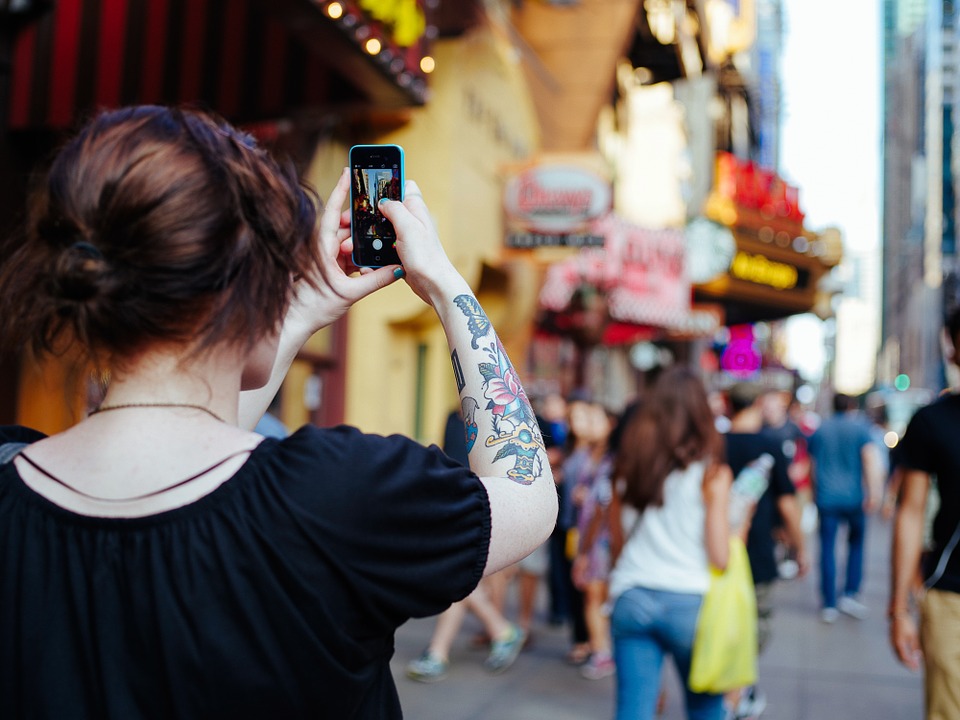“Selfies” – digital photographs that people take of themselves – have become popular, with many people posting self-portraits on social media and showing selfies to their friends and family every day. But the selfie phenomenon is controversial. Selfies have been linked to narcissism, causing concern that those who take and post them regularly are obsessed with themselves at the expense of others. Some research on selfies suggests that people use photos of themselves for purposes beyond narcissism, such as chronicling their lives and engaging in conversations with others. Still, taking so many selfies reflects a cultural trend that’s very much focused on self.
College students started Selfie Police.org, a website that encourages people to donate $1 to charity for every selfie they post online, in an effort to reduce narcissism and promote giving. The site collects donations to support a nonprofit group that gives student loans to people in developing nations who want to go to college but can’t afford it — emphasizing the importance of moving beyond selfishness to service with selfies.
You can be an example of service to others in this “selfie world” where selfish attitudes are so common in popular culture.
The many interesting moments of your life – the ones that you enjoy capturing in selfies – capture people’s attention and give them a powerful sense of who you are. So if you’re going to present images of yourself to the world through selfies, why not show love through them? Love is the most powerful force in the universe, so it’s the most important value in life. When people look at you, do they see the kind of service that exemplifies love at work?
Some of the most common types of selfies have names of their own, such as: a “welfie” (a selfie taken while working out), a “helfie” (a selfie that focuses on someone’s hairstyle), a “belfie” (a selfie of someone’s buttocks), a “lelfie” (a selfie of someone’s legs), a “drelfie” (a selfie taken while drunk), and a “bookshelfie” (a selfie that shows someone reading). Other common selfie types include photos that people take of themselves while eating, in bed, or on an outing someplace like a concert or a sporting event.
Often, people take and share selfies with no purpose beyond simply getting people’s attention. But you can use them for a greater purpose: to inspire others. You can do that through selfies that show you at work serving other people.
Maybe it’s time to help coin a few new selfie spinoff words. Consider some of the possibilities:
• “Helfie”: A selfie that shows you helping someone with a specific need, such as by: doing a round of dishes or laundry when your parents are especially busy, brainstorming with your brother or sister about a problem he or she hopes to solve, or studying with a friend who’s preparing for a test at school
• “Velfie”: A selfie that depicts you engaged in a volunteer effort through an organization that helps people in need, such as by: sorting and distributing food at a food bank, giving blood, or reading to young children who need more positive role models in their lives
• “Prelfie”: A selfie that illustrates you praying for others, in various ways and places, such as: closing your eyes in prayer at home (although it may be tricky to get a good angle with your eyes closed, the shot will likely still turn out!), kneeling at your place of worship, or on a prayer walk
• “Commelfie”: A selfie that focuses on ways you’re contributing to your local community, such as by: picking up litter, reporting any suspicious activity you witness to the police, or doing yard work for an elderly neighbor
• “Lonelfie”: A selfie that shows you alleviating loneliness in someone’s life, such as by: listening to a friend who feels misunderstood by others, visiting people in your local hospital, or corresponding regularly with your grandparents to keep in touch with them
• “Pelfie”: A selfie that illustrates you as a peacemaker who works to resolve conflicts, such as by: forgiving your brother or sister for a mistake he or she made that hurt you, mediating a dispute between friends, or encouraging estranged family members to re-connect with each other to talk
• “Jelfie”: A selfie that focuses on a specific way you’ve worked for justice to be done in a situation by trying to right a wrong, such as by: standing up for someone who’s being bullied, refusing to listen to gossip about someone else, or reporting cheating that you witness in school or at work
You don’t even have to use those names – after all, they are kind of awkward – to capture people’s attention with selfies that show you loving and serving others. As the common saying goes, a picture is worth a thousand words. Showing the world images from your life that go against our culture’s self-absorbed attitudes and illustrate the power of love in action is bound to get people’s attention.
Selfies that aren’t actually selfish will make people think. Those kinds of selfies will inspire people to put love into action more in their own lives.
It may be a “selfie world” we live in, but loving service still has the power to attract people’s attention and change their lives for the better!


